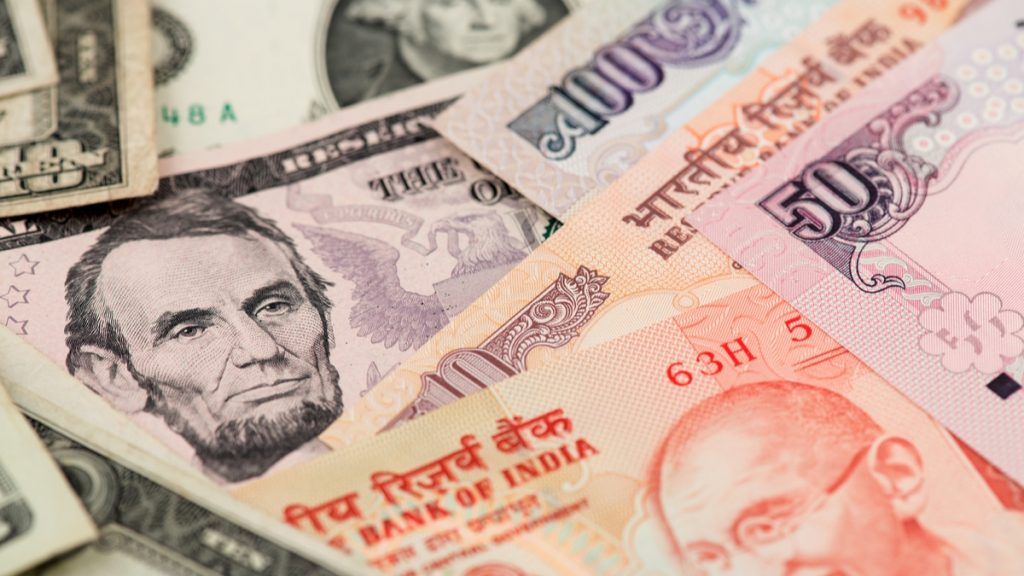The Indian Rupee’s performance much better than its peers from developed and emerging economies; consolidation now on cards and fall to be capped from here
The Indian Rupee’s weakening run against the US Dollar is primarily because of external reasons than of its own making. The Dollar has appreciated more than 14 per cent on the year-to-date basis (as on 28 September 2022) against a basket of major currencies (Dollar Index). Meanwhile, rupee’s fall at 7.4 per cent against the greenback has been gradual, barring the last 10 sessions, were the fall has been around 2.5 percent and slightly steeper.
Rupee’s slide cannot be seen in isolation and its movement is bound to get impacted if Dollar moves on either side against the basket of currencies from developed economies.
The depreciation has rung alarm bells among many, back-home. However, the impact on it is imported and has been severe in the event of the interest rate hike of 75 bps by the US Federal Reserve. The central bank’s decision was with a view to bring US inflation to targeted 2 per cent to ensure price stability. The Consumer Price Index (CPI) is at four-decade high and touched 10 per cent mark, recently.
The Fed will keep raising rates in phased manner and expectations are that they will be hiked by another 150 basis points from the current range of 3-3.25 per cent. Others central banks are expected to follow suit.
Fed Chair Jerome Powell has cleared his stance that the priority for the central bank was to ensure price stability by bringing down inflation even if that was at the cost of their growth and employment.
The Dollar will keep appreciating unless bond yields come down and rates get stabilized in the US. This will thereby keep other currencies volatile.
Central banks across the globe are aware of this fact and have been intervening to protect their currencies by selling dollars to reduce its demand. The Reserve Bank of India (RBI) has also been making timely interventions to protect rupee from a dramatic fall. It has been successfully able to negotiate and keep rupee around 80 between July and September period.
As per estimates of many experts, Rupee may test levels between 83 and 83.5 by the end of this year. After touching 82, INR recovered around 0.70 per cent on 30 September 2022 – the day of the RBI monetary policy announcement – its biggest recovery in three weeks.
There is also a lot of concern about depleting forex reserves and some of it is being put as alarming. The worries are not unfounded but not as big as is being made out to be. Governor Shaktikanta Das in his speech said that the receding reserves had much to do with the Dollar appreciation than actual money leaving the Indian shores.
The RBI governor had said that, “About 67 per cent of the decline in reserves during the current financial year is due to valuation changes arising from an appreciating US dollar and higher US bond yields.”
Foreign Portfolio Investors (FPIs) have been pulling out money from emerging economies to protect their returns and earn higher returns, back home. With higher interest rates and appreciating bond yields, it makes more sense for them to invest in developed economies.
We must not ignore the fact that economies today are not isolated and are impacted definitely by global events.
After nine successive months of outflows, domestic markets saw inflows worth USD 7.5 billion during the July to September (Q2FY23) quarter, the Reserve Bank Governor had highlighted in his MPC outcome speech. “From external financing side, net foreign direct investment (FDI) improved to USD 18.9 billion in April-July 2022 from USD 13.1 billion a year ago,” Mr. Das had reportedly said.
India’s foreign exchange reserve stood at USD 537.5 billion as on September 23, 2022 according to RBI data which is quite significant.
From here, Rupee is likely to consolidate against the USD. The trend of depreciation is expected to stay over the next couple of quarters. However, the rate of fall is believed to remain benign.
While we may argue over the desired level of rupee versus the dollar, the RBI has stated its stance on this saying that the exchange rate will be determined by market forces and that the central bank does not have a view on any fixed exchange rate.
Dollar being a global currency and a bench mark, its movement cannot be controlled by India or rupee movement. One can take heart from the fact that it rupee has performed much better than many of its peers from emerging and developed markets.
Even as the RBI raised repo rate by 50 bps on 30 September in line with the expectations, it has stated clearly that it will not take its eyes away from the growth even as its priority remains taming inflation.
Its stance remains accommodative with surplus liquidity still remaining in the system. The banking regulator expects government spending to go up lending further liquidity.
The economic situation remains dynamic and there will be GDP forecasts followed by upgrades or downgrades.
Not standing the challenges, India will be the fastest growing economy in the world and amid talks of recession in developed economies like the US and the UK, it remain significantly insulated from what happens there.
As the economy grows, capital markets gain strength, one can expect a rebound.

